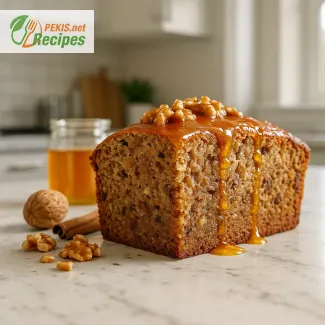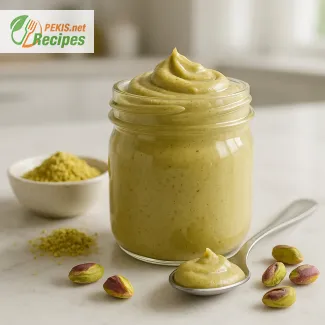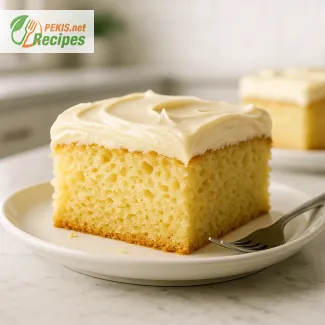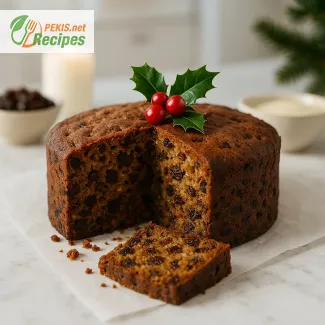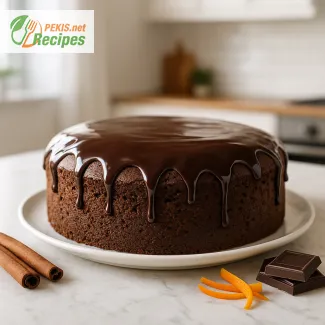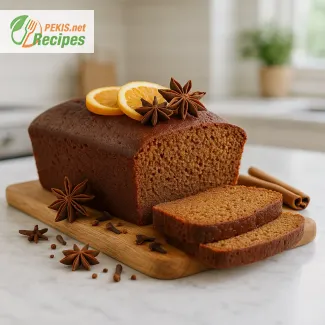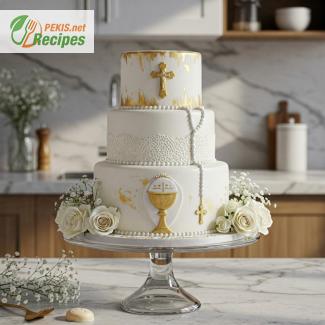
Creative First Communion Cake Decorations: Inspiration and Expert Tips
The Art of Decorating a First Communion Cake
A First Communion is a significant milestone in a child’s life, a day filled with joy, faith, and cherished family moments. As with any meaningful celebration, a beautifully decorated cake plays a central role in the festivities. A well-crafted First Communion cake not only serves as a delightful treat but also symbolizes purity, spirituality, and love. Whether you are a seasoned baker or a creative enthusiast eager to design a special cake, learning how to make DIY First Communion cake decorations can elevate the entire experience.
Choosing the Right Theme for a First Communion Cake
The first step in designing an unforgettable First Communion cake is selecting the right theme. Since this event is deeply rooted in tradition and faith, the decorations often reflect spiritual symbols. Popular choices include:
- Crosses and Rosaries – Representing the sacred nature of the occasion, these delicate details can be made from fondant, edible pearls, or icing.
- Dove Motifs – A symbol of peace and the Holy Spirit, doves can be intricately crafted with sugar paste or royal icing.
- Chalice and Bread – A traditional representation of the Eucharist, perfect for adding a meaningful touch to the cake.
- Floral Accents – White roses, lilies, and daisies symbolize purity and innocence, making them a wonderful addition to the design.
- Gold and Silver Details – Adding elegance and a touch of sophistication, these metallic accents can enhance the overall aesthetic of the cake.
Essential Tools and Materials for DIY Cake Decorations
Creating stunning DIY cake decorations requires the right tools and ingredients. Whether working with fondant, buttercream, or royal icing, having a well-equipped workspace ensures professional-looking results. Essential items include:
- Fondant and Gum Paste – Ideal for sculpting intricate designs and elegant figurines.
- Piping Bags and Nozzles – Essential for decorating with precision and achieving stunning icing details.
- Edible Gold and Silver Leaf – Adds a luxurious finish to crosses, chalices, and lettering.
- Food Coloring and Luster Dust – Helps achieve soft pastels, vibrant hues, or a shimmery effect for a polished look.
- Lettering Stencils and Embossing Tools – Perfect for adding scripture verses, names, or blessings onto the cake.
Techniques for Achieving a Professional Look
Mastering the art of cake decoration involves patience, creativity, and a few expert techniques. Here are some practical tips to help you create a stunning First Communion cake:
1. Creating Smooth and Elegant Fondant Covers
A flawless cake starts with a perfectly smooth fondant layer. To achieve this:
- Roll out the fondant evenly to avoid creases and cracks.
- Use a fondant smoother to eliminate air bubbles.
- Apply a thin layer of buttercream before placing the fondant for a seamless finish.
2. Mastering Royal Icing Details
For delicate piping work, royal icing is the best choice. When creating intricate patterns:
- Use a fine piping tip for elegant designs.
- Practice on parchment paper before decorating the cake directly.
- Allow each layer of icing to dry before adding more details.
3. Adding Dimension with Edible Pearls and Beads
Edible pearls create a classic and refined look, especially when outlining crosses or rosaries. To apply them neatly:
- Use tweezers for precise placement.
- Lightly brush with edible glue to secure them in place.
4. Elegant Hand-Painted Accents
For a one-of-a-kind look, hand-painted details can elevate the cake's design. Use:
- Edible food paint to create watercolor-like effects.
- Gold and silver accents to highlight key elements of the design.
Personalized Cake Toppers and Unique Finishing Touches
A custom cake topper is the perfect way to make a First Communion cake even more special. Handmade toppers can include:
- The child's name and date of the ceremony.
- A miniature Bible or chalice sculpted from sugar paste.
- A praying figurine to represent the spiritual significance of the event.
Adding a personalized prayer or blessing as an edible inscription also enhances the sentimental value of the cake. Simple yet meaningful messages such as "God Bless You" or "First Holy Communion" in elegant script can make a profound impact.
Creating a Meaningful First Communion Cake
A beautifully decorated First Communion cake is more than just a dessert; it is a symbol of faith, love, and tradition. By incorporating thoughtful designs, meaningful symbols, and expert techniques, you can create a memorable centerpiece for this special occasion. Whether you prefer an elegant, minimalistic look or an elaborate, intricate design, DIY cake decorations allow you to craft a cake that truly reflects the importance of the day.
With a bit of creativity and attention to detail, your handmade First Communion cake decorations will not only impress guests but also become a cherished highlight of the celebration.
- Prepare the Cake: Preheat the oven to 175°C (350°F). Grease and flour a cake pan.
- In a mixing bowl, cream together butter and sugar until light and fluffy.
- Add eggs one at a time, beating well after each addition. Stir in vanilla extract.
- In a separate bowl, sift together flour, baking powder, and salt. Gradually add dry ingredients to the wet mixture, alternating with milk, and mix until smooth.
- Pour batter into the prepared cake pan and smooth the top.
- Bake for 35-40 minutes or until a toothpick inserted into the center comes out clean.
- Let the cake cool in the pan for 10 minutes, then transfer to a wire rack to cool completely.
Prepare the Buttercream Frosting:
- Beat butter until creamy. Gradually add powdered sugar and mix well.
- Add vanilla extract and milk, continuing to beat until smooth and fluffy.
Decorating the Cake:
- Roll out the fondant on a lightly powdered surface. Cover the cake with a smooth layer of fondant.
- Use royal icing to pipe elegant designs such as crosses, rosaries, or a chalice.
- Add edible gold dust for a luxurious finish.
- Personalize with hand-painted details or sugar flowers for extra elegance.
Elevating Your First Communion Cake: Expert Tips and Creative Enhancements
Small Changes That Make a Big Difference
A First Communion cake is more than just a dessert—it is a symbolic centerpiece that represents faith, purity, and joy. While a traditional recipe provides a solid foundation, small modifications can elevate both the flavor and presentation of the cake. Whether you want to enhance its taste, texture, or aesthetics, incorporating thoughtful changes can transform a simple cake into an extraordinary one.
Choosing the Right Ingredients for a Richer Flavor
The quality of ingredients plays a crucial role in the final outcome of the cake. Here are some ways to upgrade the classic recipe:
1. Enhancing the Butter
Instead of using regular unsalted butter, opt for European-style butter, which has a higher fat content and provides a creamier, more luxurious texture. This simple swap enhances the richness of the cake and makes it moist and tender.
2. Upgrading the Sugar
Refined white sugar works well, but replacing a portion with light brown sugar adds a hint of caramel-like depth and results in a softer crumb. For a more natural alternative, try coconut sugar, which has a subtle molasses-like flavor.
3. Boosting the Vanilla Flavor
Most recipes call for vanilla extract, but using pure vanilla bean paste or fresh vanilla pods adds a much more pronounced, aromatic flavor. It also enhances the overall warmth and depth of the cake.
Improving the Cake’s Texture
Achieving the perfect moisture balance is key to making a soft, tender cake. Here are a few ways to optimize texture:
1. Adding Sour Cream or Greek Yogurt
Mixing a few tablespoons of sour cream or Greek yogurt into the batter increases the cake’s moisture and tenderness without making it heavy. This addition is especially helpful if using lower-fat dairy substitutes.
2. Incorporating Buttermilk
Replacing regular milk with buttermilk makes the cake lighter and fluffier by activating the baking powder and baking soda, resulting in an airier crumb.
3. Using Oil for Extra Moisture
While butter adds richness, substituting a small portion with a neutral-flavored oil (such as canola or light olive oil) ensures that the cake stays moist for longer, even after refrigeration.
Common Mistakes to Avoid
Even experienced bakers can make mistakes that affect the texture, flavor, and appearance of the cake. Here are some common pitfalls and how to avoid them:
1. Overmixing the Batter
Mixing the ingredients too much develops gluten, leading to a dense and tough cake. To avoid this, mix the batter just until combined and use a gentle folding motion when incorporating flour.
2. Incorrect Measuring of Flour
Using too much flour results in a dry, heavy cake. Instead of scooping directly from the bag, use the spoon-and-level method, which ensures accurate measurement.
3. Baking at the Wrong Temperature
If the oven temperature is too high, the cake will brown too quickly on the outside while remaining undercooked in the center. Always preheat the oven and use an oven thermometer to ensure accuracy.
4. Not Allowing the Cake to Cool Properly
Removing the cake from the pan too soon can cause it to break apart, while cooling it for too long in the pan traps steam and makes it soggy. Let the cake rest in the pan for 10 minutes, then transfer it to a wire rack for even cooling.
Healthier Alternatives for a Guilt-Free Treat
While a First Communion cake is traditionally indulgent, there are ways to make it a bit healthier without compromising flavor or texture.
1. Replacing All-Purpose Flour
Swap white flour with whole wheat pastry flour or almond flour for added fiber and nutrients. Almond flour also enhances the moisture of the cake.
2. Reducing Sugar
Gradually decreasing sugar by 20-25% still results in a sweet, flavorful cake without excessive sugar content. Natural sweeteners like honey or maple syrup can also be used in moderation.
3. Using Healthier Fats
Instead of only using butter, incorporating avocado oil or coconut oil provides heart-healthy fats while keeping the cake rich and moist.
4. Substituting Dairy and Eggs
For a dairy-free version, replace milk with oat, almond, or coconut milk. Instead of eggs, use a flaxseed or chia seed egg substitute, which also boosts the fiber and omega-3 content.
Creative Decoration Ideas for a Stunning Cake
While fondant and royal icing are classic choices for First Communion cake decorations, there are other ways to make the cake visually appealing while keeping it delicious.
1. Using Natural Food Coloring
Instead of artificial dyes, use beetroot powder, matcha, turmeric, or blueberry juice to create soft pastel shades in the decorations.
2. Adding Edible Flowers
Edible flowers like chamomile, violets, or lavender add a delicate, natural elegance while complementing the flavor profile.
3. Creating Texture with Different Piping Techniques
Instead of a completely smooth fondant finish, experiment with textured buttercream techniques such as ruffles, rosettes, or lace patterns for a sophisticated yet modern look.
4. Hand-Painted Gold Accents
Edible gold leaf or metallic luster dust enhances the religious symbolism of the cake, making crosses, doves, or chalice decorations stand out beautifully.
Why Homemade Is the Best Option
Making a First Communion cake from scratch allows for greater control over ingredients, flavors, and quality. Unlike store-bought cakes that may contain preservatives and artificial additives, a homemade cake is fresher, healthier, and more personal.
Additionally, crafting the cake at home ensures that dietary restrictions and preferences can be met. Whether making a gluten-free, dairy-free, or reduced-sugar version, baking from scratch guarantees a customized, high-quality dessert.
Elevating Your First Communion Cake
A First Communion cake should be both beautiful and delicious, serving as a memorable centerpiece for this special occasion. By making simple ingredient swaps, avoiding common mistakes, and getting creative with decorations, you can craft a cake that is not only visually stunning but also deeply flavorful and meaningful.
Whether sticking to tradition or experimenting with new techniques, each adjustment adds a unique touch that transforms a classic recipe into a truly exceptional dessert.
- Contains gluten (flour), dairy (butter, milk), and eggs. (Source: National Institutes of Health)
- For a gluten-free version, substitute all-purpose flour with a gluten-free flour blend.
- Dairy-free alternative: Replace butter with plant-based margarine and milk with almond or oat milk.
- Egg-free version: Substitute each egg with 60 g (¼ cup) unsweetened applesauce or a flaxseed egg mixture.
- Calcium (50 mg) – Supports bone health (Source: WHO)
- Iron (1 mg) – Essential for oxygen transport in blood (Source: NIH)
- Vitamin A (300 IU) – Important for vision and immunity (Source: Healthline)
- Vanilla extract contains vanillin, a natural antioxidant that may help reduce inflammation (Source: NCBI)
- Edible gold contains trace minerals that may support overall health (Source: ScienceDirect)
